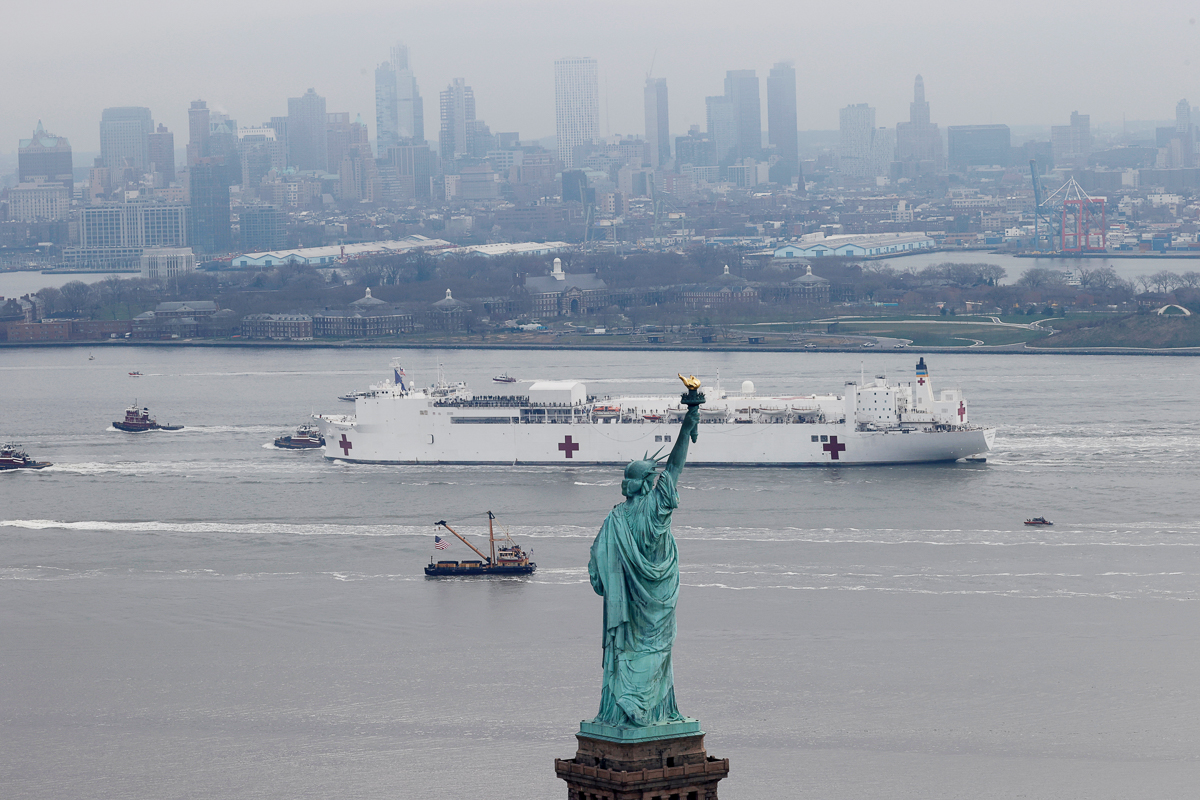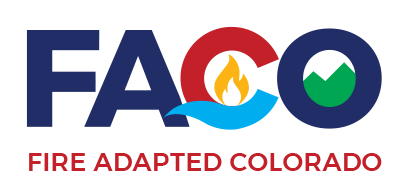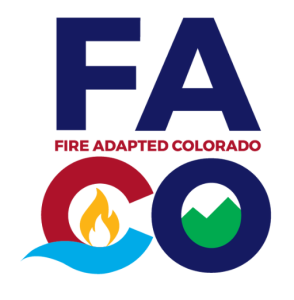Community Adaptation, Landscape Resilience, and Safe & Effective Response for COVID-19
By Eric Lovgren, Wildfire Mitigation Coordinator for Eagle County and Chairperson for Fire Adapted Colorado

It’s early February, and like many in Eagle County, I’m prepping for a day on the slopes. I start my morning ritual with a quick check of the news for updates on the winter storm that is about to bless our valley. The reporter mentions that something called the ‘novel Coronavirus’ is impacting travel in Asia, and that a few cities I’ve never heard of will be closing. Unimpressed, I busy myself until it’s time for the weather. Hearing what I came for…”big snow totals for the central mountains”…I happily reach for the keys (singing the Paul Simon lyric “I get all the news I need on the weather report”).
Now it’s mid-March, and after posting a bunch of hilarious videos about toilet-paper to my Facebook account, my family heads to a dinner party to discuss our upcoming spring-break trip to Costa Rica. It is unanimous among our group that this new virus (it has a name now, COVID-19) is not a problem, will most certainly not affect us, and that…”as long as there’s a plane, I’m getting on it!” Resolute in our airtight reasoning around the threat of this soon-to-be global pandemic, we part ways looking forward to the trip of a lifetime.
Flash forward 72 hours from that dinner party and just about every aspect of our daily lives have changed! The schools are closed. Bars and restaurants have shut down. Our spring-break trip of a lifetime is canceled (instead we get to run a homeschool now!) There is no plane to get on because borders are closed, and domestic travel restrictions are now in place. The ski areas are shutdown, and there are barricades around the ball fields and playgrounds. I tell my kids they’ll have plenty of time to read books and exercise during this ‘shelter-in-place’ order, and tears begin to fill their eyes. Later, as I stand in a carefully spaced line of doomsday preppers at the liquor store, we’re all carefully avoiding each other and trying to figure out our next move. Confident I have enough wine and TP to get the family through this, I head out for some “essential exercise” with the dog.
Not being an Epidemiologist, nor having any real background on pandemic disease spread beyond Zombie apocalypse books and movies, I allow my thoughts to wonder. I’d heard one pundit say that COVID-19 “will spread like wildfire if we don’t take action now!” Then it clicked for me: a virus spreads much like a wildfire does; the only difference is that the fuel it feeds on is us! So I asked myself, do the same tenants of our cohesive wildfire strategy apply to disease prevention? The short answer is yes.

Let’s start with the idea of community adaptation. In the context of wildfire, community adaptation consists of informed and prepared residents collaboratively planning and taking action to safely co-exist with wildland fire. The overall goal of those actions is to reduce the risk of a wildfire catastrophically impacting their community. In the context of stopping the spread of a deadly virus, we’re being asked to apply similar measures. Social distancing is the same epidemiological concept as creating a fuel break. We limit the uncontrolled spread of a virus just like we would a wildfire, by modifying the arrangement and density of the available fuels…in this case, by changing the way we interact and gather to limit person to person transmission. This action levels the infection rate in a population in the same way that the spacing of trees and shrubs impact how a fire moves across a landscape. By staying at home, we’re creating millions of tiny fuel-breaks aimed at limiting the spread of COVID-19. We then further harden ourselves for the embers that may breech our fire break by washing our hands, and wearing masks. The fire, or virus, still moves across the landscape, but the exponential growth of each is limited allowing for an effective response by firefighters and health providers alike.

There are more parallels when it comes to facilitating a safe and effective response to a pandemic or wildfire. We see the same problems arise for firefighters as we do for health care workers in the way that a large wildfire quickly overwhelms first responders. Just like firefighters trying to protect hundreds (or thousands) of homes with a limited amount of resources, we see the same frustrations from our doctors and nurses scrambling to treat an ever-growing number of patients with a limited amount of hospital beds and ventilators. Difficult decisions have to be made regarding what, or who, is worth saving based on what resources are available. This is the reason we implement social distancing and wildfire mitigation measures – we cannot rely on someone to come save us from every possible threat if we have done nothing to make that possible. At some level, individual action must be taken for the good of all! If I harden my home, and create a defensible space, I’m improving the chance of my neighbor’s home surviving a wildfire, as well as giving firefighters a chance to safely protect both. If I ignore my personal responsibility to prepare my home for fire, then I have done nothing to benefit myself or the community. In fact, I’ve set myself up to be on the losing end of one of those difficult decisions. The same is true for ignoring social distancing measures, and contributing to the spread of a virus. If I don’t take personal responsibility to protect more vulnerable members of the population, then there will be little our healthcare providers can do to save them.
Finally, the idea of a wildfire resilient landscape is almost identical to a disease resilient population. Action is taken before, during, and after any potential disturbance. This looks like implementing forest management and community wildfire protection plans in the context of wildfire, and by developing comprehensive vaccination and wellness programs on the public health side. It also means ensuring that our first responders have the training and personal protective equipment to address the threats that we ask them to respond to, be it wildfire, flood, or pandemic disease. It means ensuring that the public has the correct information to protect themselves, and an adequate social safety-net needed to catch them when they fall. It is incredibly difficult to find time to prepare your property for fire, or your family for quarantine, if you are struggling to put food on the table. Even more difficult if you no longer have a place to live! Community and landscape resilience requires a holistic approach to adapting to the shocks and stresses placed upon it.
I find myself looking for the silver linings these days. I’m grateful for the opportunity to spend more time with my family (even though they’re terrible co-workers). I appreciate my friends, and the opportunity to give one of them a hug again someday. I’m glad I got a chance to check so many items off my to-do list, even though it always seems to grow bigger (another discussion entirely). So this spring and summer, as we transition to a new “normal,” get out there and tackle your personal social distancing to-do list with a grander sense of purpose. That could include trimming the trees and cleaning the gutters along with volunteering at a food bank or donating blood. It could just mean writing a quick list of items you’d grab and things you’d do for a wildfire evacuation while you’re sitting on your couch to help stop the spread of a deadly virus. There are opportunities in every hard time we encounter. Find one that matters to you.

